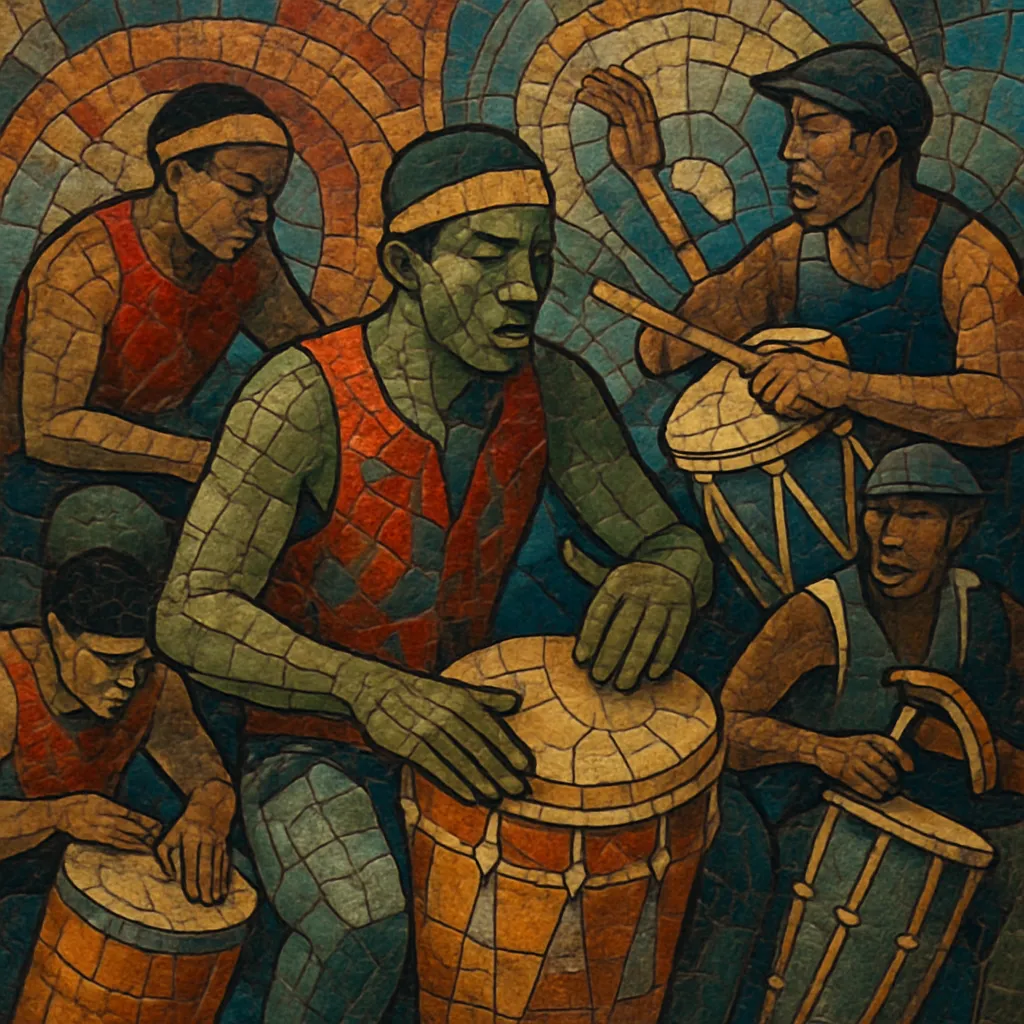Batucada is a high-energy, percussion-driven style of samba played by large drum ensembles known as baterias. It is characterized by driving 2/4 rhythms, layered polyrhythms, and a powerful collective groove designed to move large crowds, especially during Carnival parades.
The core sound comes from surdos (large bass drums) that mark the pulse and interlock in tuned layers, while caixas (snares), repiniques (high, cutting toms), tamborins, chocalhos, agogôs, cuícas, and reco-recos weave dense rhythmic textures. A whistle (apito) or the repinique section leader cues breaks, call-and-response figures, and dramatic stops (paradinhas).
Although mostly unpitched and ensemble-based, batucada is musical, nuanced, and highly arranged, with subtle swing, dynamic contour, and signature "bossas" (precomposed rhythmic figures) unique to each samba school’s bateria.
Batucada emerged in Rio de Janeiro’s Afro-Brazilian communities in the early 20th century, crystallizing during the 1930s with the rise of the first escolas de samba (samba schools). It drew from Bahian samba de roda and urban batuque gatherings, incorporating instruments and practices brought by internal migration from Bahia to Rio. Early hubs such as Praça Onze and neighborhoods dubbed “Little Africa” nurtured the rhythmic vocabulary and ensemble ethos that define batucada.
As samba schools formed (e.g., Deixa Falar, Mangueira, Portela), their baterias became the core engine of Carnival parades. Through the 1930s–50s, instrument families standardized: multi-voiced surdos for pulse and counter-pulse, caixas for swing and drive, repiniques for leadership and calls, and high-frequency textures from tamborins, chocalhos, agogôs, and cuícas. A landmark innovation was the paradinha—a dramatic full-ensemble break—popularized in the late 1950s by Mestre André at Mocidade Independente, which showcased precision, showmanship, and dynamic contrast.
Radio, records, and later television amplified the spectacle of Rio’s parades, while competition criteria (tightness, swing, originality of bossas) pushed baterias toward ever-greater discipline and creativity. Distinct school identities emerged—each bateria cultivated signature patterns, tunings, and break vocabularies.
From the late 20th century onward, batucada spread worldwide via community samba groups, touring artists, and cultural exchange. In the 2000s, blocos (street ensembles) like Monobloco helped fuse batucada with pop/rock repertoires, while electronic producers sampled batucada textures in house and club music. Today, batucada remains both a living Afro-Brazilian tradition and a global performance practice, central to samba-enredo and Rio’s Carnival.


